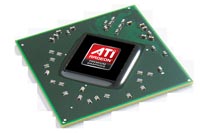Graphics and Gaming
Most laptops have either one of two types of graphics:
Onboard graphics – this uses the graphics hardware that comes with the system’s CPU. It uses much less power but is far less powerful; it’s fine for most use and even some moderate gaming however more demanding games and graphic programs tend to need more graphics power than this can deliver. You also lose some of the system’s RAM to support this system – you can usually set this up but it’s not uncommon to lose half a gigabyte of RAM as it’s allocated to the machine’s onboard graphics system
 Discrete (dedicated) graphics – this is a solution that is similar to a proper graphics card in a desktop computer. It has a more powerful graphics chip, usually has its own discrete graphics memory and is much better suited for gaming, 3D design work, etc. It also uses significantly more power and requires more cooling which can be rather noisy if loud cooling fans need to be used. This can lead to greater size and more weight and significantly increased cost; all gaming laptops have this type of system installed as it is needed to play most modern games. Look online for performance tests and recommendations for that particular laptop’s graphics chip; also look at the resolution of the screen and see how the two match, a lower resolution screen can be driven by a less powerful graphics chip successfully but if you’re connecting an external monitor then it pays to source one that’s more powerful.
Discrete (dedicated) graphics – this is a solution that is similar to a proper graphics card in a desktop computer. It has a more powerful graphics chip, usually has its own discrete graphics memory and is much better suited for gaming, 3D design work, etc. It also uses significantly more power and requires more cooling which can be rather noisy if loud cooling fans need to be used. This can lead to greater size and more weight and significantly increased cost; all gaming laptops have this type of system installed as it is needed to play most modern games. Look online for performance tests and recommendations for that particular laptop’s graphics chip; also look at the resolution of the screen and see how the two match, a lower resolution screen can be driven by a less powerful graphics chip successfully but if you’re connecting an external monitor then it pays to source one that’s more powerful.
Hybrid / switchable – some laptops let the user switch between onboard graphics and discrete graphics, sometimes without having to restart the machine. This can be extremely useful – if you don’t need the power of discrete graphics and need to save battery life then this will use the onboard graphics instead. Fire up a game or something more intensive and the system switches over to the more powerful (and power hungry) discrete graphics system. This system is becoming more common as operating systems do a better job of supporting it; expect to see this become more commonplace in the future.
Special needs for rendering and 3D design applications – some programs are designed to make use of the graphics chipset to perform other functions, for example a range of 3D design applications can use certain NVIDIA chips to give them additional processing horsepower to speed up complex rendering tasks. This depends heavily on the program itself and not all graphics chips are well supported even if they are the recommended brand; if you are looking to run this type of program it will pay to do some research and find out the graphics chip that is used in the laptop you are looking at, careful planning here can make a significant difference in performance.